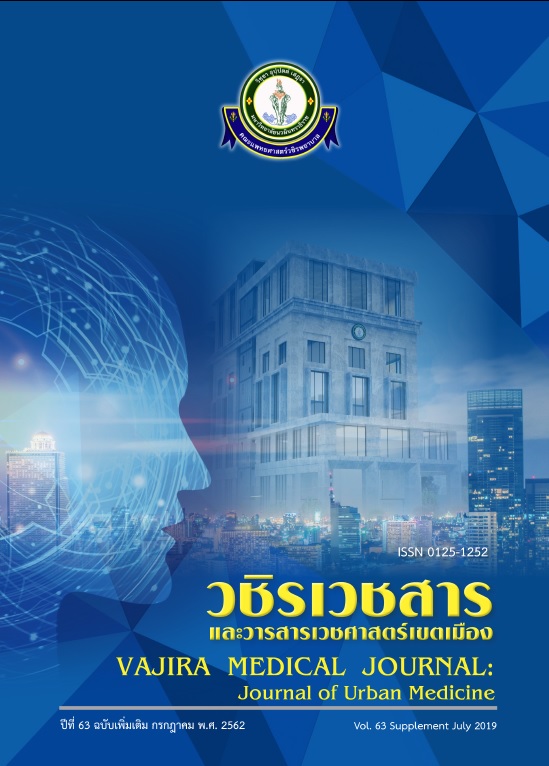Promotion of community participation to develop community health systems: The Case Study of Taling-chan District Community
Main Article Content
Abstract
The current economic, social and environmental conditions influence the health status and behavior of Thai people, resulting in people’s changing attitude towards their lifestyle. Thus, living together, caring for each other and community well-being can be achieved with the strong development of a health care system in the community and the adjustability to the current situations while maintaining the balance of life. The guidelines for developing a community health system to enhance community potential include that the community and public participation should be promoted to allow people to participate in self-management for solving the problems for their own, family and community benefits as well as to fully and comprehensively respond to the distribution of community health system development, with decision making, implementation, participate in benefits and evaluation. Therefore, strengthening the community is important and private sector and public organizations are necessary to support the role of public sector in order to reinforce to develop a community health system to strengthen the community in a secure, wealthy and sustainable manner as a good operation in the Taling Chan district community.
Downloads
Article Details
References
2. Wasi P. Thailand health system in the decade. Bangkok: Moh-Chao-Ban publishing house; 2017.
3. Powwattana A, Kalampakorn S, Lagampan S, Amnatsatsue K. Health promotion and disease prevention in community: an application of concepts and theories to practice. 2nd ed. Khonkaen: Klungnana vitthaya press; 2012.
4. Nata P, Suwannaprom P, Awiphan R. Integration in community health system. Thai journal of pharmacy practice 2019; 11:77-91.
5. Sriwanichakorn S, Yana T, Phakprot T, Bookbboon P. To a healthy community. Nonthaburi: Sahamit printing and publishing; 2015. p. 27-35.
6. Thungwha L, Iraporn T, Chinachoti P, The Development of Community Potential in Team Management : A Case Study of Housewife Group In Premruethai Community, Prawet Sub-District, Bangkok. Kasem Bundit Journal 2018; 19:61-72.
7. Chalardlon T, Moolsart S, Lawang W. The Development of a Health Promotion Activity Model for Elderly in the Ban Pong Elderly Klungpunya Club, Ratchaburi Province. Nursing Journal of The Ministry of Public Health 2017;27(2):154-67.
8. Thongsri P, Kiatlertdecha T, Sarachan A, Chiangkhong A. Primary health care: the starting point for developing a healthy community. Networking in the smart city collaboration of smart health and Smart Community; 12-13 July 2018; Navamindradhiraj university. Bangkok: Papermate publishing; 2018.
9. Muangyai A. Development Approach to Enhancing the Potential of Community and Local in the Twenty-First Century. EAU Heritage Jouurnal Social Science and Humanities 2016; 6(3): 12-25
10. Thiangtham W. In: Thiangtham W, Lagampan S, Powwattana A, editors. Community capacity building : concept and applications. 4th ed. Bangkok: Protexts; 2015. p. 53-74.


